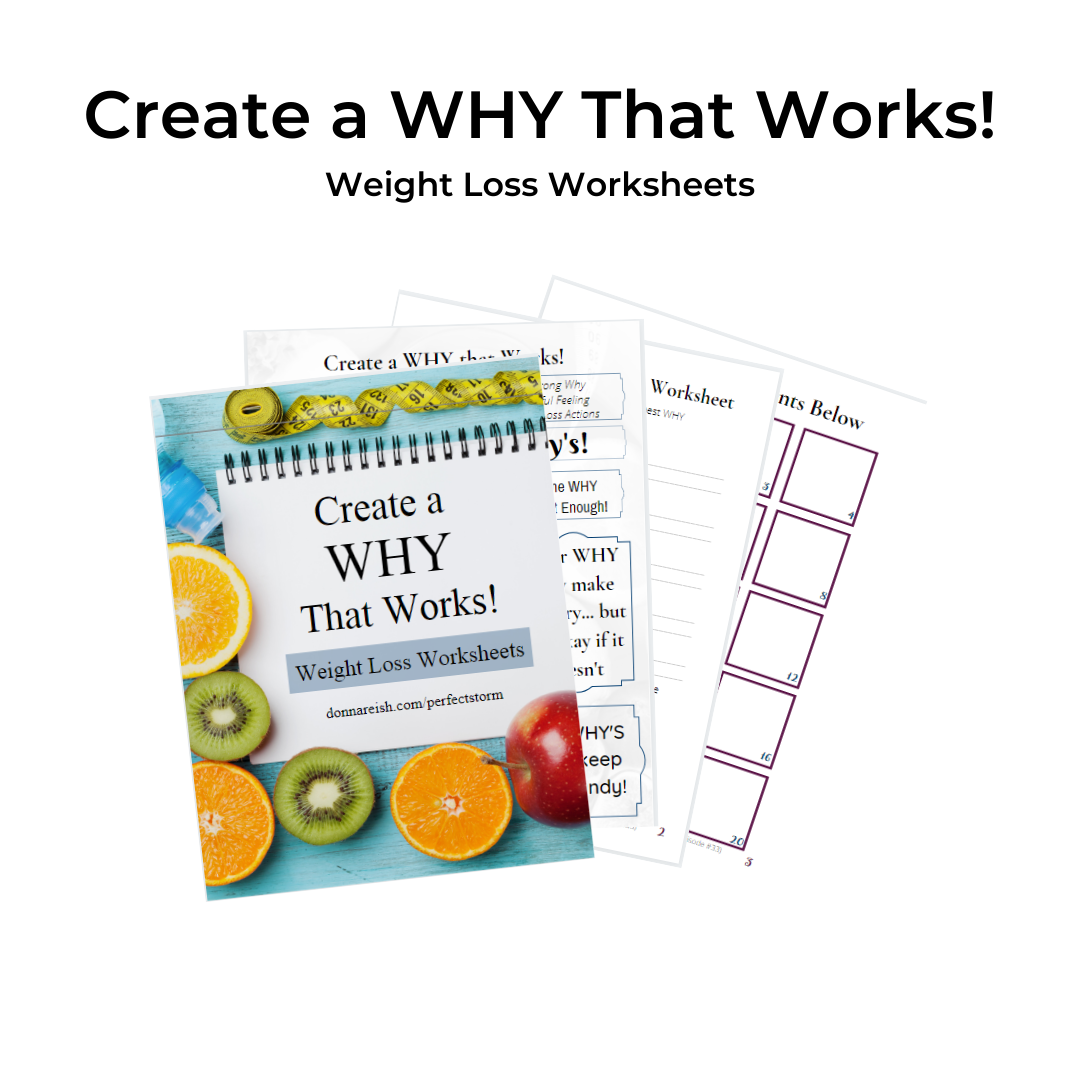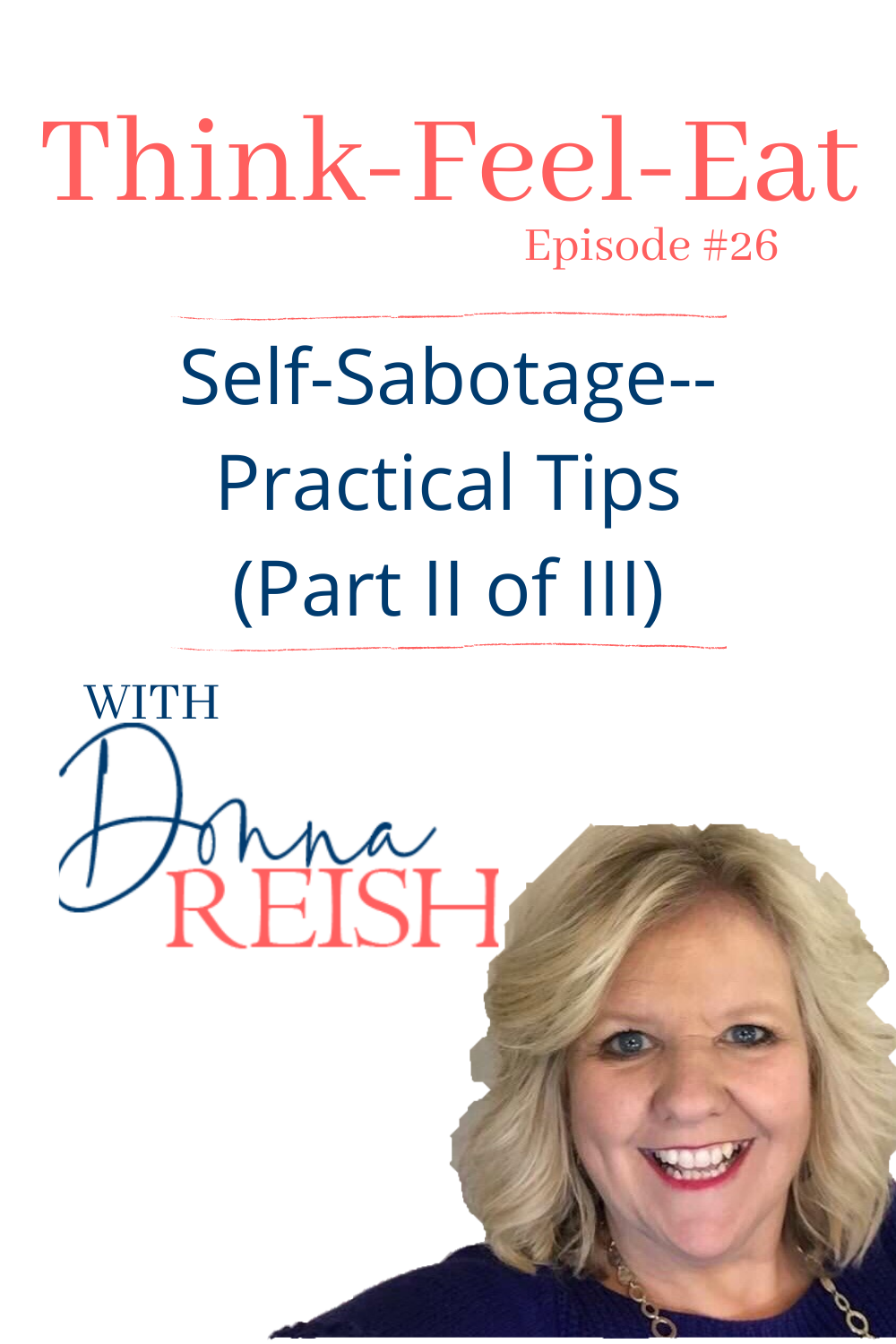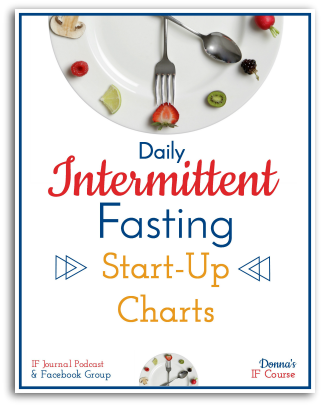
Think-Feel-Eat Episode #33: Create a WHY That Works
Hi! I’m Donna Reish, IF teacher, weight loss coach, blogger, and half of “The Minus 220 Pound Pair” as my husband and I have lost over 220 pounds together (160 of that in the past couple of years through the Weight Loss Lifestyle habits and strategies I teach!).
In this episode, I present how we can create a weight loss why that works!
If you have spent any time at all in weight loss, self-development, entrepreneur, or goal setting, you have probably heard the importance of having a WHY in your life to help you meet your goals.
Because of this, many of us have worked on some WHY statements through the years. We write down grandiose ideas that we think will somehow magically move us when we are having a tough time staying on our weight loss plan. Then we don’t understand why those statements aren’t working.
Many times our WHY isn’t helping us because it is too vague, too unbelievable to us, too grandiose, too far away, too cumbersome to remember, or too disconnected from our daily weight loss efforts.
In this episode, I teach how you can create a WHY that works—Understand…
1) A WHY is a Thought…and a Thought leads to a Feeling and a Feeling leads to an action.
2) A strong WHY will take you back to your goals.
3) It’s okay if your best WHY seems vain! It’s okay to want to look great.
4) A WHY should help you take the next best step.
5) Your WHY doesn’t have to be noble.
I provide an amazing workbook that has a Q and A section that will help you come up with at least 20 WHY’s—so that you can pull out the right one for the job at the right time!
These include questions like Why do I want to lose weight? How will I feel when I reach my goals? What will change when I reach my goal? And more..
Also included in the workbook is a sample of my page of answering the questions and some of my best WHY’s (for me!).
I want so many good things for you! I know that finding your WHY will help!
Find all of my episodes, outlines, and articles for my two weekly broadcasts:
(1) Weight Loss Lifestyle broadcast (formerly Donna’s Intermittent Fasting Broadcast)
A. Introduction
1. We need a strong WHY in order to stay on our protocols!
3. Join us at the “Drop 8 Pounds by Christmas” challenge!
a. Join at the blog to get all of the email updates and trainings
c. Watch the short info video here!
B. Thoughts About Creating a WHY That Works
1. A Why is a thought… A thought leads to a Feeling… A Feeling leads to an action…
2. Think: Strong Why– Feel: Helpful Feeling — Act: Weight Loss Actions!
3. A strong WHY will tak you back to your goals!
4. One WHY isn’t enough!
5. Create at least 20 Why’s.
6. A Why isn’t to give you warm fuzzies, a why is to make you pause…and make a good decision… take the best path for your weight loss…
7. It’s okay if your best why seems vain! It’s okay to look great!
8. Your why doesn’t have to be noble.
9. Your why may make you cry… but it’s okay if it doesn’t
10. Write your best why’s over and over — keep your best one’s handy!
C. Questions to Ask to Find 20 WHY’s (See my sample worksheet filled in here!)
1. Why do I want to lose weight?
2. How will I feel when I reach my goal?
3. How will I look when I reach my goal?
4. What will change when I reach my goal?
5. What gets you excited about your goal weight?
D. Closing
1. Put your WHYs where you’ll see them
2. Make them short and snappy enough to remember them
3. Use the right one for the job!


















